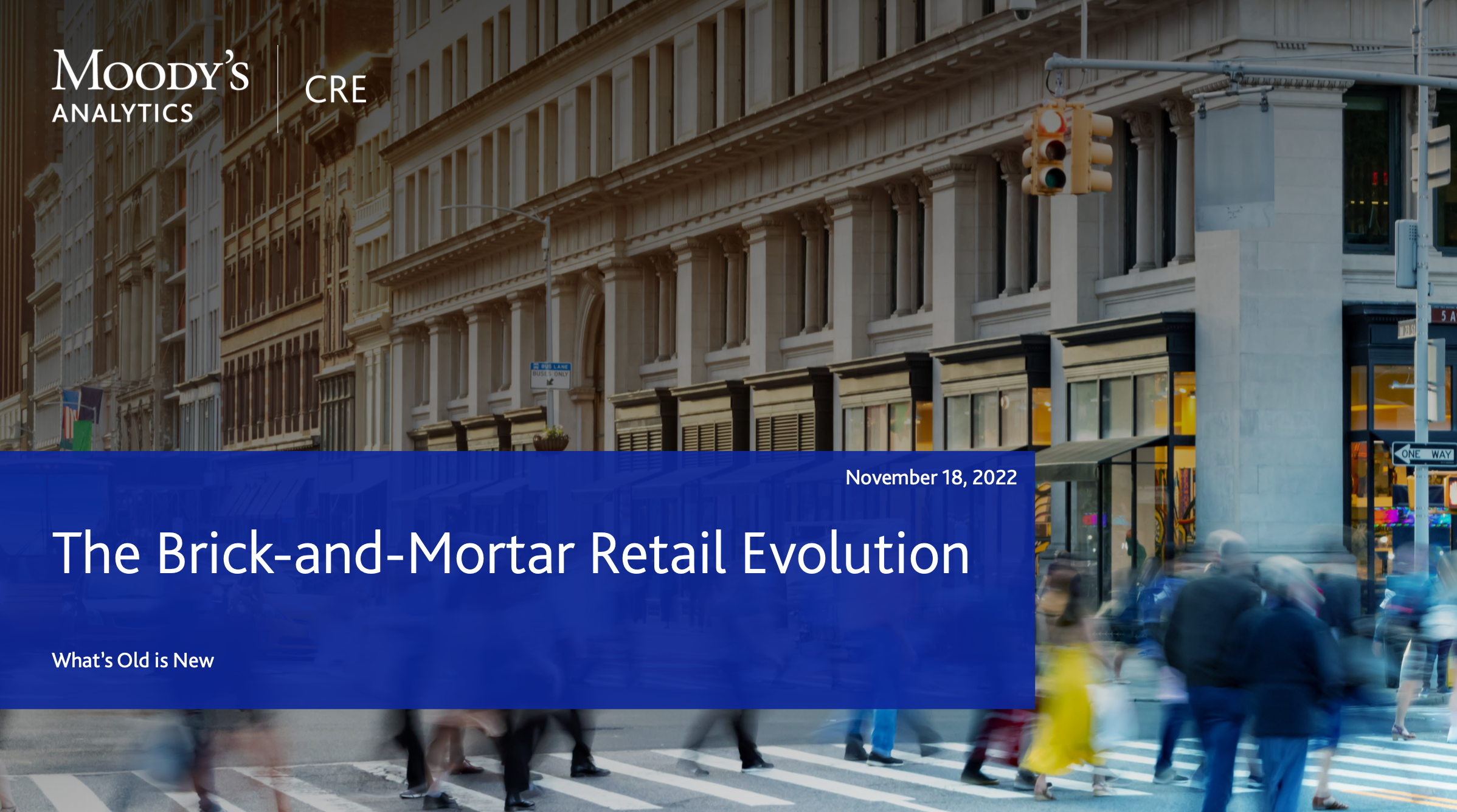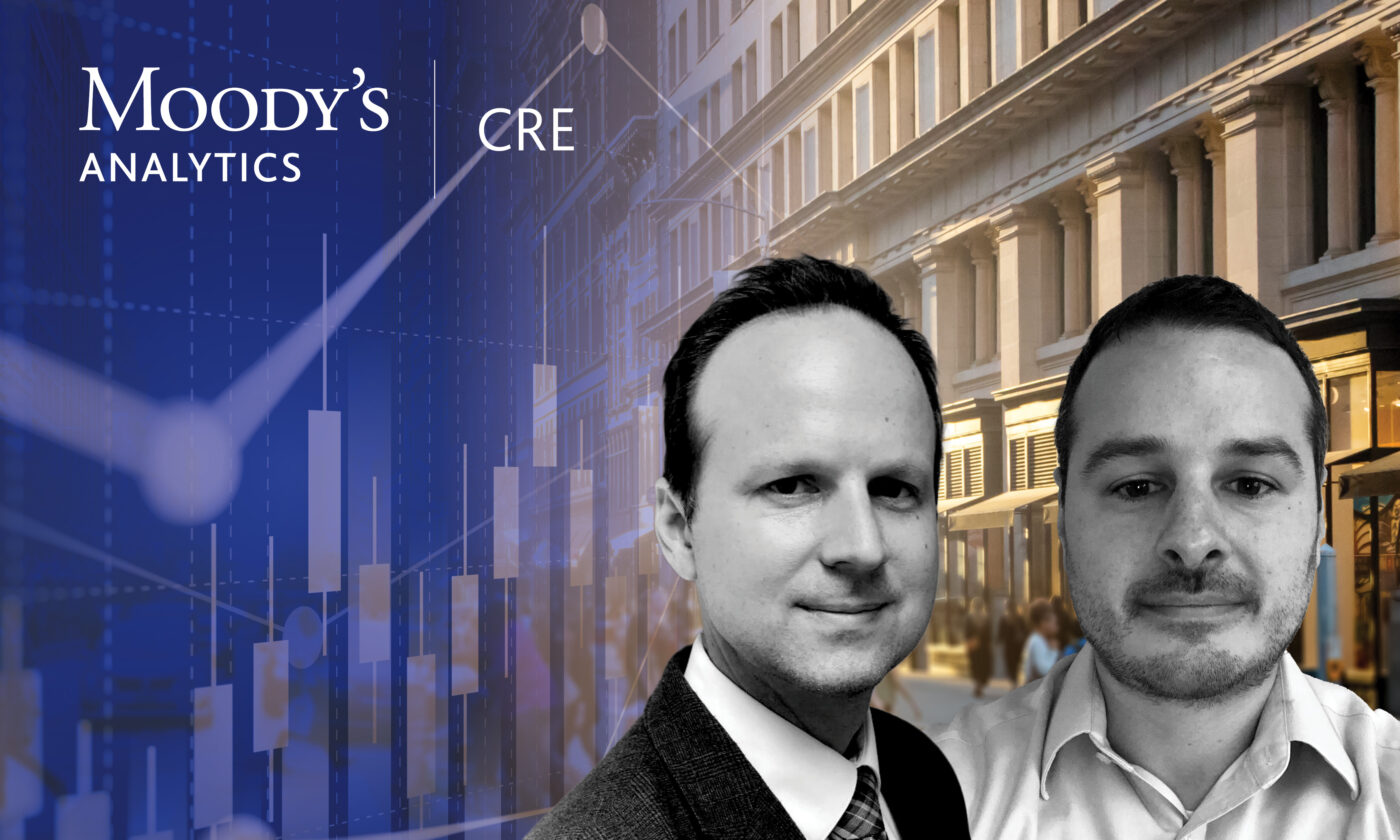The team at Moody’s Analytics is continuing to study the impacts of COVID-19 on the retail sector, and their latest paper traces the trends in mall development leading into and coming out of the pandemic. Senior Economist Tom LaSalvia and CRE Data Scientist David Caputo sat down with The Real Deal to talk about how the mall ecosystem has evolved since the middle of the 20th Century, how a relatively new type of mixed-use mall development has become central to the story of retail post-pandemic, and what the role of walkable spaces in American consumer life will be going into the future.
The Evolution of the American Mall
The story of malls in the 20th Century was a tale of adaptation to meet new technological and social trends. With the proliferation of cars and the move by urban planners toward highway development, malls replaced the thriving city centers that had been the beating heart of commerce for centuries. From the humble strip mall of the 1950s came “the indoor mall of the 1960s, ‘70s, and ‘80s, and then the power centers of the ‘90s and 2000s,” said LaSalvia. By the turn of the century, traditional neighborhood malls were the dominant retail space across the country.
However, beginning in the early 2000s, the ubiquity of e-commerce radically changed how developers looked at malls as online purchases took up an increasing share of retail sales.
We haven’t really seen a traditional mall built in the last two decades, said Caputo.
As new mall development came to a halt, vacancy rates in existing malls began to climb slowly and steadily, reaching a pre-pandemic high of just under 10% in late 2019. Leading into the pandemic, the forecast for the traditional neighborhood mall was not positive.
The Pandemic Blip
Then the COVID-19 pandemic came, and with it an avalanche of predictions that brick-and-mortar retail would soon be a thing of the past. However, Moody’s analysis shows that, despite a spike in retail vacancies and the share of e-commerce sales during 2020 and 2021, the numbers have returned to the same general trend they had been on pre-pandemic. There are a number of explanations for this reversion. “The pandemic had a lesser effect on retail than expected partially because landlords and property managers found more creative ways to keep tenants in place,” said Caputo. “Concessions made by landlords are helping keep vacancies at bay.”
Consumers too are doing their part, with certain sectors seeing major increases in the wake of the pandemic’s darkest months. “As time has progressed, there’s been a pretty dramatic shift in spending patterns,” said LaSalvia. “What we’ve seen is that the consumers have come back, and they’ve dramatically desired to get out and about.” While sectors like grocery and drug stores remained strong throughout the pandemic, consumers have recently begun to prefer experiential retail experiences like dine-in restaurants as well as social gathering spaces like pubs and indoor rock climbing facilities. In short, post-COVID, people want to spend time around other people.
“A Little City Center”
This trend toward socializing is a boost for retail in general because it creates the vibrancy that people crave when moving through public spaces, but it also isn’t enough to save the traditional neighborhood mall by itself. In addition to new tenants that provide experiential retail experiences, many developers are looking to recreate the city center model by combining office and residential spaces with retail and other amenities like playgrounds and outdoor seating areas. In many ways, this is just good business. By creating “a little city center in what otherwise would have been a traditional suburb,” said LaSalvia, developers are giving people access to a type of walkable space that had been found in only the most expensive urban zip codes throughout most of the 20th Century.
Mixed-use mall development was already on the rise before the pandemic, with developments like 2017’s Legacy West in Plano, Texas combining “office buildings, townhouse and multi-family style housing, and both experiential and goods retail. Now, as more neighborhood malls fall prey to creeping vacancy rates, they are becoming candidates for this type of redevelopment. The paper cites the Oakdale Mall in Johnson City, NY, as an example of a mall that is successfully resuscitated in this way. Built in 1975 and anchored for decades by a large Sears and a two-story Macy’s, the 500,000 square foot mall faced financial woes during the 2010s. The mall is now thriving after the Sears was redeveloped into a brewery, one of the major winners in this era of experiential retail, and Dick’s Sporting Goods is planning a “flagship” like facility combining traditional retail with experiential retail, like batting cages and an ice staking rink.
Of course, not all malls are destined for this type of redevelopment. Major regional malls are still going strong, and even some neighborhood malls are finding success by incorporating tenants from strong sectors like grocery stores. “It used to be that one in five malls had a grocery store, and those were mostly Targets,” said Caputo.
Now stores like Eately and Ranch 99 are going in and it’s already proving to drive up foot traffic. And these places are not just grocery stores, but they also have dine-in experiences. Malls are stealing that from the traditional shopping center.
Creating a Retail Ecosystem
One way of thinking about these new mixed-use mall developments is by comparing them with the organized convenience of a city street. “My office is on this street, and so is my coffee shop, so is where I get lunch, and I can walk to these things, and my apartment is only two blocks away, so I’m walking to work, I’m getting coffee, shopping, getting lunch,” said LaSalvia. Thanks to these new mixed-use mall developments and redevelopments, “this option is being created for people that haven’t had it before except in big expensive cities. And that is ultimately helping retail in those areas.”
After a century that saw retail development heavily trend toward a monolithic world of neighborhood malls, this type of walkable, vibrant retail setting is bringing back something that was once lost. “We are, little by little, breaking down the traditional segmentation that zoning did for a long time in this country,” said LaSalvia. Going forward, the retail ecosystem will have a diversity of inhabitants, from e-commerce giants to walkable mixed-use spaces to regional outlet and destination malls, all of which benefit one another symbiotically to provide customers with the widest possible variety of retail experiences.

To learn more about the trend toward mixed-use mall development, read Moody’s Analytics latest paper, The Brick-and-Mortar Retail Evolution: What’s Old is New.


